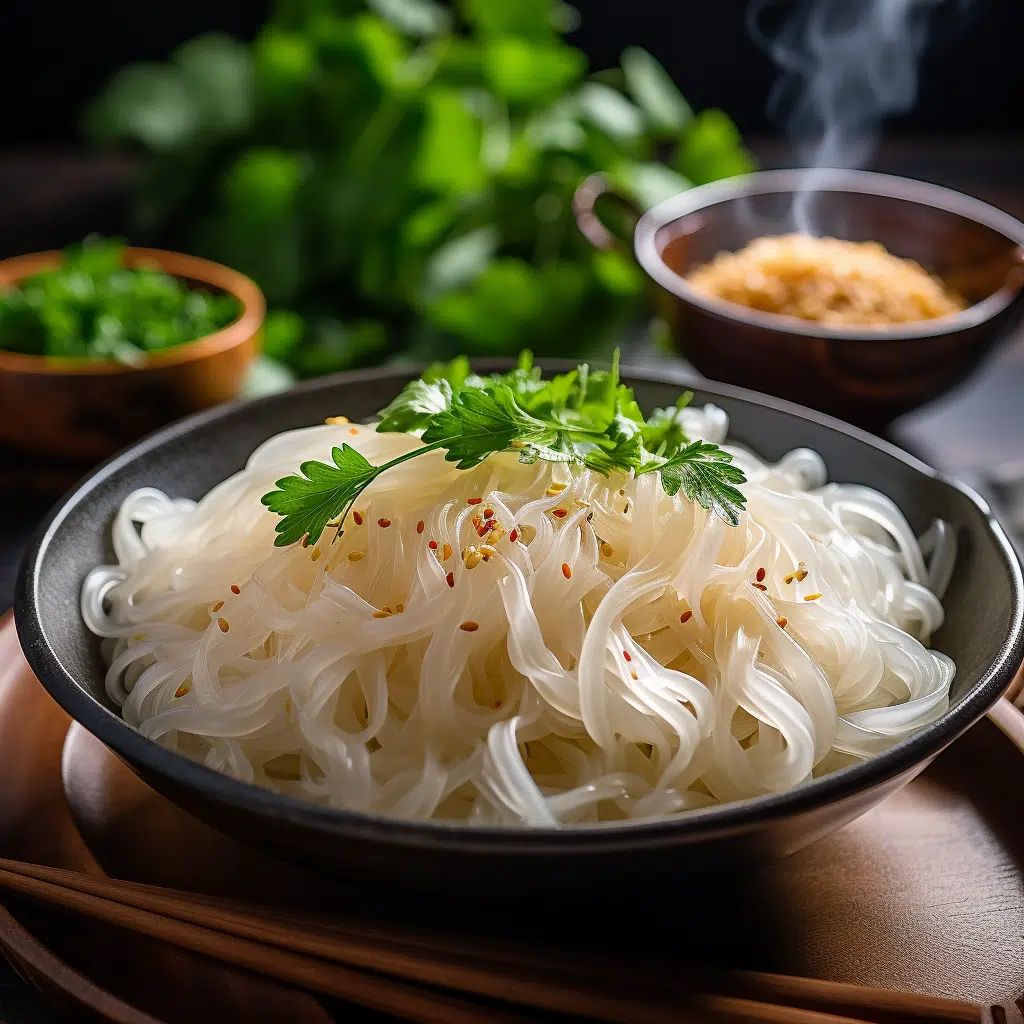Are Rice Noodles Healthier Than Wheat Noodles?
Noodles are a beloved staple in cuisines around the world. From comforting bowls of ramen to quick stir-frys, they offer a versatile canvas for countless dishes. Many people wonder if rice noodles are healthier than wheat noodles. This question holds particular significance for food lovers who enjoy experimenting with different noodle types and flavors. Let’s explore the nutritional aspects, preparation tips, and cultural significance of these noodles to determine the Healthier option.
Overview of Noodles: Rice vs. Wheat
Noodles come in many varieties, each with unique characteristics and cultural backgrounds. Understanding these differences can help you make informed choices about your diet.
Types of Noodles
- Rice Noodles: Made from rice flour and water, these noodles are popular in Southeast Asian dishes like pad Thai and pho. They are naturally Gluten-free.
- Wheat Noodles: These include traditional pasta and Asian varieties such as ramen and udon. Wheat noodles contain gluten, which gives them their chewy texture.
- Glass Noodles: Often made from mung bean starch, these noodles are translucent and have a slippery texture.
- Instant Noodles: Quick to prepare, these pre-cooked noodles come in a variety of flavors and typically include a seasoning packet.
- Shoyu Ramen: A type of ramen with a soy sauce-based broth. It’s light and savory.
- Tonkotsu Ramen: Known for its rich, creamy broth made from pork bones. This ramen is a favorite in Japanese cuisine.

Are Rice Noodles Healthier Than Wheat Noodles? Nutritional comparison
When comparing rice noodles to wheat noodles, it’s nutritional aspects such as calories, carbohydrates, fiber content, and protein content.
| Nutrient | Rice Noodles | Wheat Noodles |
|---|---|---|
| Calories | 192 per cup | 221 per cup |
| Carbohydrates | 44 grams | 43 grams |
| Fiber Content | 0.9 grams | 2.5 grams |
| Protein Content | 1.6 grams | 7.5 grams |
Rice noodles are lower in calories and protein but higher in carbohydrates. They have less fiber, which can impact digestion. Wheat noodles, , provide more protein and fiber.
Gluten-Free and Dietary Restrictions
- Gluten-Free: Rice noodles are naturally gluten-free, making them suitable for those with gluten intolerance or celiac disease.
- Dietary Restrictions: Choosing the right noodle can cater to specific dietary needs, whether low-carb, high-protein, or gluten-free.
Preparation Techniques and Cooking Tips
Cooking noodles perfectly requires understanding their unique preparation methods. Here are some tips for each type:
Rice Noodles
- Boiling: Soak rice noodles in hot water for a few minutes until soft, then drain. Avoid overcooking as they can become mushy.
- Stir-Frying: After soaking, stir-fry with vegetables and protein for a tasty dish.
- Cold Dishes: Rinse cooked noodles in cold water to prevent sticking, perfect for salads.
Wheat Noodles
- Boiling: Cook in boiling water until al dente, then drain and rinse with cold water if using in cold dishes.
- Ramen: Simmer in broth with seasoning and toppings for a comforting meal.
- Udon: Boil until tender, then serve in soup or stir-fried.
Avoid common mistakes like overcooking or not rinsing noodles, which can affect texture and taste.
Recipe Ideas and Cultural Significance
Noodles hold cultural significance across the globe. Here are some recipe ideas to try:
Rice Noodle Recipes
- Pad Thai: A classic Thai dish with rice noodles, shrimp, peanuts, and lime.
- Vietnamese Pho: Aromatic soup with rice noodles, beef, and fresh herbs.
Wheat Noodle Recipes
- Shoyu Ramen: Japanese ramen with soy sauce broth, topped with sliced pork and green onions.
- Spaghetti Bolognese: Classic Italian pasta with a rich meat sauce.
Noodles symbolize longevity and prosperity in many Asian cultures, making them a staple in celebrations.

Health Benefits and Nutritional Information
Both rice and wheat noodles offer health benefits. Rice noodles are low in fat and gluten-free, making them suitable for gluten-sensitive individuals. Wheat noodles provide more protein and fiber, beneficial for digestion and satiety.
To make noodles a balanced part of your diet, consider pairing them with vegetables, lean proteins, and healthy fats.
Substitutions and Dietary Preferences
For those with specific dietary needs, consider these substitutions:
- Gluten-Free Options: Use rice noodles or gluten-free pasta for those avoiding gluten.
- Low-Carb Varieties: Explore shirataki noodles or zucchini noodles for a low-carb alternative.
These substitutions can cater to different preferences maintaining flavor and texture.
Pairing Suggestions and Side Dishes
your noodle dishes with these pairings:
- Side Dishes: Pair noodles with spring rolls, dumplings, or a fresh salad.
- Sauces: Add soy sauce, hoisin, or chili oil for extra flavor.
- Beverages: Enjoy with green tea, sake, or a light white wine.
These pairings can elevate your meal and complement the flavors of the noodles.
FAQs
- Are rice noodles gluten-free? Yes, rice noodles are naturally gluten-free.
- Which noodles have more protein? Wheat noodles have more protein compared to rice noodles.
- Can I use rice noodles in cold dishes? Yes, rice noodles work well in cold salads and dishes.
- How can I make noodles healthier? Add vegetables and lean proteins to balance the meal.
- What’s the best way to cook rice noodles? Soak them in hot water until soft, then drain and rinse.
Conclusion
Both rice and wheat noodles have their unique qualities and nutritional benefits. For those avoiding gluten, rice noodles offer a healthier option. Wheat noodles, with their higher protein and fiber content, provide different health benefits. , the choice depends on individual dietary needs and preferences. Explore the versatility of noodles by trying new recipes, experimenting with different types, or visiting a local restaurant that specializes in noodle dishes. Enjoy the rich flavors and cultural heritage that noodles bring to your table.

